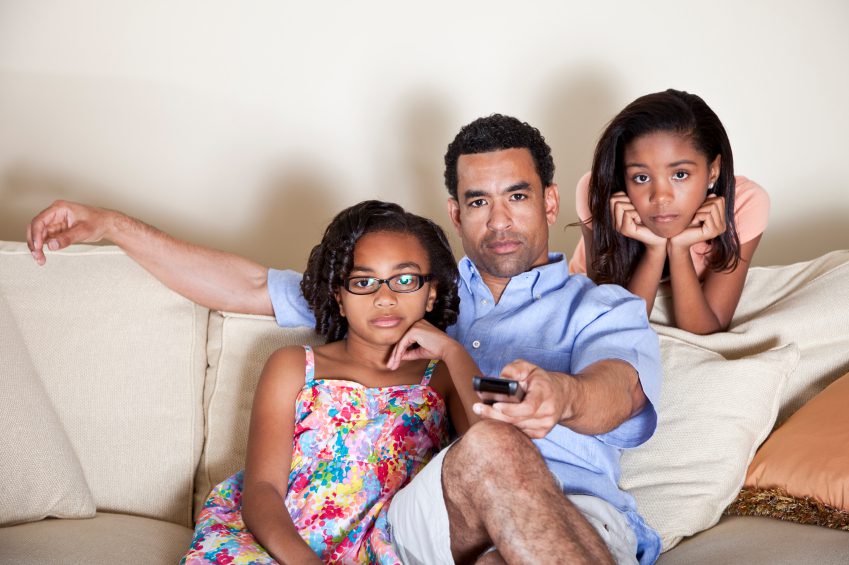Digital Media: For Better or Worse?
Posted in: Hot Topics, Parenting Concerns, Teenagers, Videos, Young Adults
Topics: Digital Media, Hot Topics
It was Patriot’s Day in Massachusetts.
I was meeting with a film maker about a possible collaboration on a documentary. We were interested in the impact of digital media on youth.
We were considering if our preoccupation with smart phones somehow alienates us from nature, and whether this was particularly characteristic of the younger generation.
I was in the midst of ranting about how much I hated texting. How that horrid ring tone elevated my blood pressure. I told him this is why I keep the phone on my desk, and not attached to my side.
And on cue, I got a text. For some reason, I decided to take it.
It was my daughter. I knew she was planning to be at the finish line for the Marathon. “Dad, there was a bomb. I’m in the Oyster House. The cops are here and said stay put. But I want to leave,” she texted. My immediate text response: “Don’t go anywhere. Stay put and have a drink. Promise?”
Turning to my friend, I took back everything I said about digital media. Had I not heard from her, had I not known she was safe and demanded that she stay in a safe place, I would have been a wreck.
In this case, the immediacy of our contact was invaluable.
But this was a rare occurrence. Much of the time the immediacy of digital media may cause more harm than good.
Take an act of terrorism, like in recent school shootings. I’m sure many parents, like me, were incredibly grateful to hear that their kid survived. But what about the cell phone photos and videos that were shot in the moment and sent out to the world? It was like watching the Gulf War on TV, which many of us did. Yet then, at least, we had commentary. We planned it in our daily life schedules. Now we have an ongoing, endless stream of videos, laced with screaming and crying. Sheer panic. And we all get to watch it over and over.
Is this useful? Does it help us in times of terror or mass confusion? How do we know what’s going on as we view image after image on Snapchat, Instagram, Twitter, or some other app? How do we know when it’s over? Is this the way we get news in our digital age?
We used to rely on vetted, trustworthy news sources for coverage of current events. Now we have access to whomever wishes to send posts. One recent study on the use of social media during a campus lockdown found that there were often conflicting reports and the recipients of those posts had significantly high stress levels.
Beyond immense tragedies, our kids live in a world of perpetual texts and images. Sometimes, the drama is pervasive. And in the hands of our teens and young adults, drawn to exaggeration, the drama tends to be high.
At last year’s Students Against Destructive Decisions (SADD) national conference, I asked the audience of over 500 high school kids:
“How many of you feel compelled to use your phones for texts and apps?”
All hands went up.
“How many of you feel that this is stressful and troubled by rumors?”
Again, all hands went up.
“How many of you can put your phone aside?”
No response. The room was silent.
So, there you have it. You can’t live with it and you can’t live without it.
Just as we are becoming more concerned about real vs. fake news on Facebook, we should also be concerned about how our phones barrage our kids with highly emotional material 24/7. Sometimes it’s local or national news. Sometimes it’s social drama in their circle of friends.
It is important to be informed and talk about world events, and even personal dramas – but how much is too much? How much is healthy for our kids?
Most importantly, what is the impact of the immediacy of news, and watching events in real time, and how does this affect their daily lives?
Possible Risks
- Intrusion. Our teens need the time and space to focus on school work, sports, arts, and social life. While they may use their devices as core components of communication, they cannot afford constant distractions.
- Trauma. Selfie videos during tragic or terror events can be so charged that many kids may become traumatized.
- Stress and High Drama. As studies show, many kids are stressed out by the rumor mill, and when they get their news mostly through social media, it is often exaggerated and conflicted.
- Trusting Social Media for News. The more our teens turn to social media to get updates on what’s going on in the world, the less they may turn to trusted news outlets for accurate information on current events.
- Brains in Overdrive. It’s become commonplace for teens today – and adults, too – to regularly check for social media updates or receive push notifications throughout the day. So, not only do our minds never get a chance to rest from constantly processing “breaking news,” but we lose that time to spend on other important parts of our lives, focusing on academics or extracurricular activities, socializing with friends, or even just enjoying music or a good book.
Possible Benefits
- Reaching Out for Help. Just as other children in past emergency events have texted their parents for guidance, so did my own adult daughter. Texting in crisis situations can be life saving, and reassuring for loved ones.
- Documentation. We now have the power of high quality portable cameras on cell phones that may help law enforcement officers and other leaders assess a critical situation.
- Support. Digital media may well help all of us garner support in times of stressful situations. Making connections with others is incredibly helpful in times of stress. But, there is always the danger of amplifying it.
Tips for Parents, Adolescents and Young Adults
- Have Conversations. Parents should talk with their teens and young adults about the use and overuse of digital media, and about how personal, local and national news affects us – positively and negatively. Teens and young adults should have similar conversations with each other. Let’s open the door to the impact of digital news on our lives to increase digital media literacy among us all.
- Determining What is Real News. It’s also important to discuss what constitutes reliable news sources. I recall just a few years back that many young adults were getting their news from The Daily Show. And while I loved Jon Stewart, and now Trevor Noah, we need our youth to differentiate bona fide journalism from comedy, from personal posts on social media. I am not sure many (including adults) can tell the difference.
- Consider Strategies for Digital Exposure. Too often we use our phones and tablets mindlessly. Perhaps it’s time to think about when and how we want to use them. Consider putting them aside for periods of time, such as while sharing meals, or setting alarms for different family members for certain times of day, or after a certain amount of time.
- Social Media Etiquette. Understanding our own comfort levels with digital media updates is critical. It’s easy to feel bombarded with notifications from peers, and the pressure to respond immediately can be stressful. However, it should be OK to let friends know that you might not respond to a text or post right away.
- Unless an Emergency, SLOW DOWN. There are clearly times for urgent texts. We know when we need to get involved. But if it is not an emergency, perhaps just slowing everything down will diminish the drama and stress in our lives.
We are living in stressful times, from terror acts to natural disasters. It seems the last thing we need is to compound basic awareness of daily events with unnecessary digital drama.


 Share
Share Tweet
Tweet





